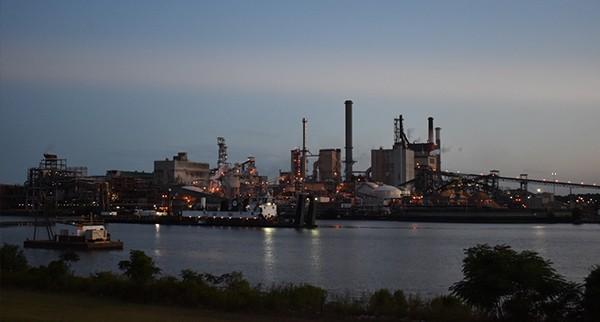The Right Things in the Right Places
by Matt Inbusch, Manager, Natural Capital Stewardship at International Paper

Originally published on LinkedIn
“Context is everything!” Some version of these words has been attributed to various academics, politicians, business leaders, comedians and others over the years. It’s also the main theme behind the concept of water stewardship, including the role of industrial water users today. At International Paper, our Vision 2030 goals are our roadmap for building a better future for people and the planet – and a contextual approach is key to our new water stewardship strategy.
Context-based water stewardship[1] can be summarized as “Doing the right things in the right places” as it relates to our collective water footprint. We recognize that all water issues are local; every watershed has different characteristics, threats and opportunities. This means that to be a good water steward, our company must use water efficiently and responsibly, while also responding to the broader context of each watershed in which we operate – water availability, quality and governance, for example. The concept of doing the right things is quite familiar to us; our company’s mantra for many years has been to do “the right things, in the right ways, for the right reasons, all of the time.” We’re excited to apply that thinking more intentionally to water stewardship through two targets: implementing context-based water management plans at all mills, and reducing our water use intensity by 25% across the enterprise.
This is a ten-year plan, and we’re currently building out our implementation strategy. But already we’re finding ways to proactively support water resources in the areas where we operate. Let’s look at one example. We operate two mills - making containerboard and fluff pulp - within a few miles of each other at the mouth of the Savannah River in Georgia. Both facilities rely on a steady supply of freshwater for their operations.[2] Recognizing the importance of water to our business and to local communities, we’ve joined a group called the Savannah River Clean Water Fund, whose mission is to protect the water supply along the Lower Savannah River. The Fund uses science-based mapping to make conservation investments by working with local landowners to permanently protect water-critical, forested areas throughout the watershed. International Paper is excited to be the first private sector company to join the effort, which is supported by The Nature Conservancy (TNC) as well as by local water utilities, state environmental agencies, local land trusts, and others.
Disclaimer: I’m neither a forester nor a hydrologist. But I’ve learned some pretty amazing things about the relationship between forests and water. For example:
- Most of the available freshwater in the world originates in forests
- Trees need water (duh), but freshwater also benefits from the many “services” that forests provide, like filtering out pollutants, preventing erosion, and recharging groundwater aquifers
- And research has shown that upstream forest cover within a water basin can help to lower treatment costs for downstream users[3]
(I recommend this super-short video as a crash course on the forest-water connection, if you’re interested in learning more.)
So even as we’re setting the stage for improvements in our facilities’ operational water use, we’re leveraging partners like TNC and others in the early-going to support the water resources that we and others depend on.
Investing in the long-term sustainability of forests and water resources is both the right thing and the smart thing to do in Savannah, and everywhere we operate (you can learn more here about a similar project with World Wildlife Fund in the Atlantic Forest in Brazil, which is also a key operating geography for us). We’re excited to keep learning and growing our impact within the water-forest nexus. Stay tuned!
Follow Matt Inbusch or comment on this article on LinkedIn.
Footnotes:
[1] Formally defined by the UN CEO Water Mandate as “informed by sustainable limits of a water basin based on science, respecting the basin’s environmental, economic, and social needs, and current and future conditions”
[2] Water is a critical input to our manufacturing process, used in nearly every stage from pulping wood and recycled fiber, to papermaking, to power generation and more. Our water use is largely non-consumptive; we return more than 90% of it back to the river after treatment.
[3] https://www.tpl.org/sites/default/files/cloud.tpl.org/pubs/water-protecting_the_source_final.pdf

